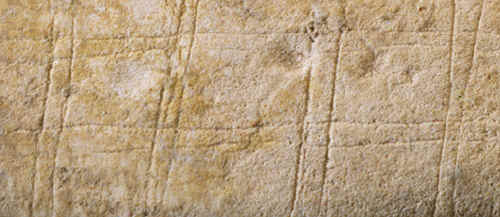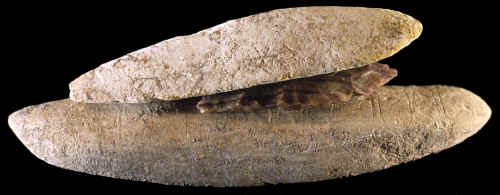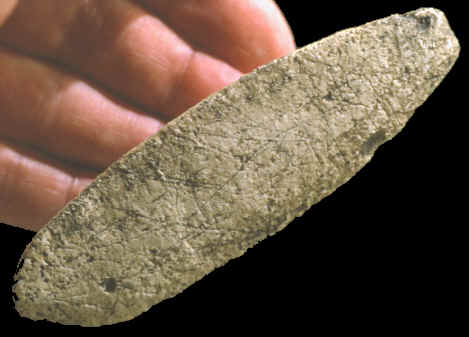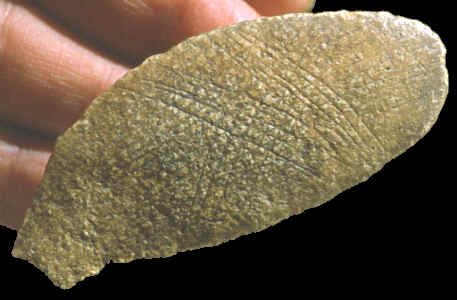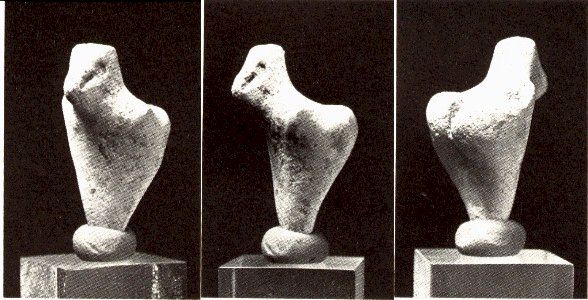Hi Frank and Charlie...
(From Frank) That's probably why Dr. C. took the time to listen to me when I told him about Charlie's site.
Hence all the cheerleading - fair enough. It would be great if you could use your connections to engage someone with the resources to properly sort out Charlie's stuff, as this certainly warrants it. And yes, the pros have little time for their own projects, with everything that is out there. That certainly is the case here in Ohio, and here they also have a severe lack of manpower and money, even for the popularly recognized "Indian" stuff - not to mention the career hazards inherent in considering anything outside the established paradigms.
What sends me into orbit is something I see over and over again - the pros do not like amateurs venturing into their domain, particularly when these seem to be onto something they would much prefer to be their own discovery, and the first thing the pros do is throw out something patently bogus in an attempt to short-circuit the amateur's efforts (e.g., limestone couldn't possibly survive, etc.). And it's not a uniquely American phenomenon by any means. Richard (a.k.a. Manystones) was just recently treated to this wretched display by a prominent British archaeologist who told him his material could not possibly be artificial because the origin of the rock of which it is composed predates the arrival of humans. (So much, then, for all our nice flint triangles we have been assuming to be arrowheads, etc.)
I apologize for my unseemly grumpiness - it's due to a mild disorder I have, diagnosed as bullshit intolerance.
(From Charlie) Note, the photo is missing. ... I've heard that one of the pieces is a biface. That's about all I've been able to figure out.
Contrast this with Dr. Albert Goodyear's putting his Topper finds out on display for everyone, including amateurs like me, to fondle and photograph at will. (See
http://www.daysknob.com/Topper_A.htm )
(From Charlie) I understand your frustration, Richard and Alan. I've been sitting on what I believe to be preClovis iron smelting facilities and artifacts. And every time it rains, the structures erode a little more...
Frustrating indeed. And "preClovis" or not, any such evidence predating European contact is remarkable and very important. This past summer, I've diverted a great deal of effort from my own project to working with Dave Gillilan, also in southern Ohio, who has a lot of similar and obviously artificial metallic material (apparently iron) 1.5 meter (5') down in undisturbed terrain, in direct context with a cache of diagnostically (professionally identified) Late Archaic lithic artifact material. The state archaeologists were at first eager to register the find, but when they saw photos of the metal, they immediately dismissed the site as a nineteenth century landfill, although absolutely nothing resembling trash of this or any other era appears in the vicinity. We hired a professional geomorphologist to verify the stratigraphy ($800 including backhoe rental), so we now have documentation that the terrain adjacent to the find is undisturbed glacial till (not counting a shallow plow zone). (And Dave had earlier dug up thousands of cubic feet of the immediate area to lay utility lines for a construction project, finding absolutely no trash.) The "professionals'" response to this was that there must be a landfill there somewhere - just keep looking. (I really love this common archaeological variation on the scientific method applied to something heretofore unaccepted - start with an
a priori conclusion and work back through the evidence, adjusting this accordingly.)
(From Charlie) Have you tried to solicit help from a geologist? They tend to be a lot more objective.
Damn right. Been doing this for some time now - only way to go. (See
http://www.daysknob.com/H05.htm ) At least my own project has been officially designated as an archaeological site (33GU218), although there is currently no interest in a proper professional excavation because only a few flint pieces (nonlocal) are present, despite professionally (petrologist) identified worked material of other lithologies, and such things as worked bone and human hair. Fun and games...
Anyway, thank you both for your comments and observations. I wish you luck in your endeavor - we all need a lot of it.
Regards, Alan









